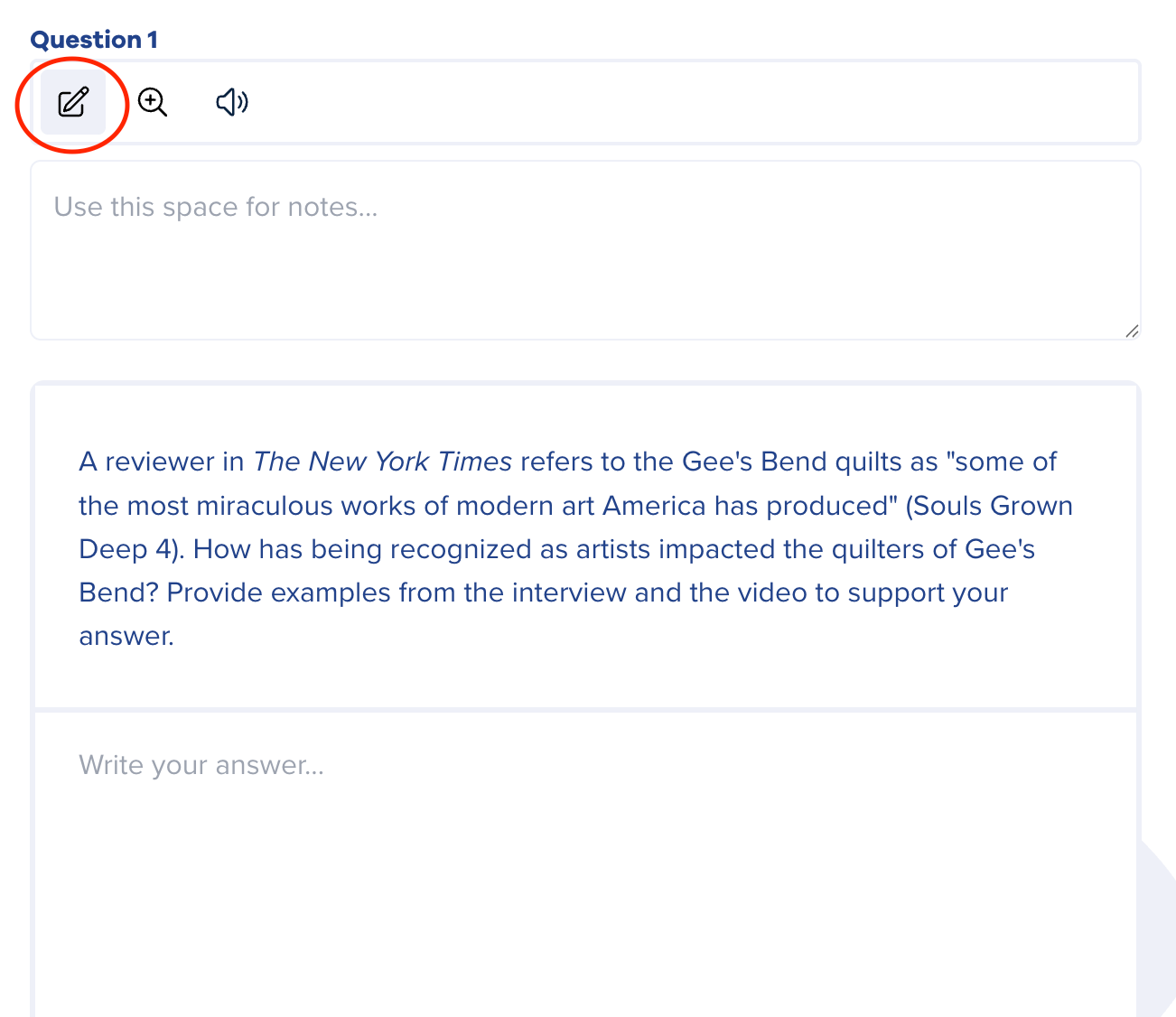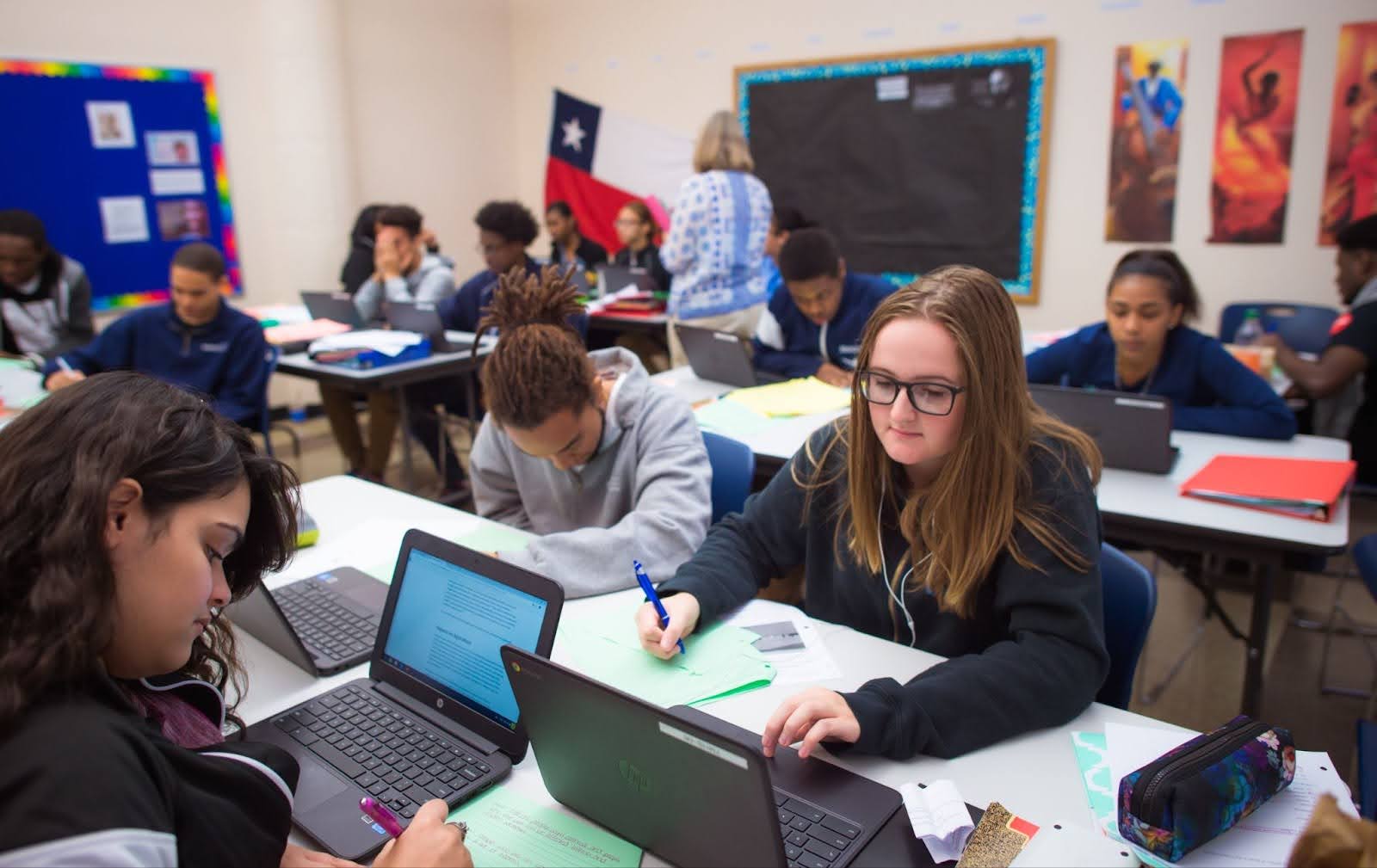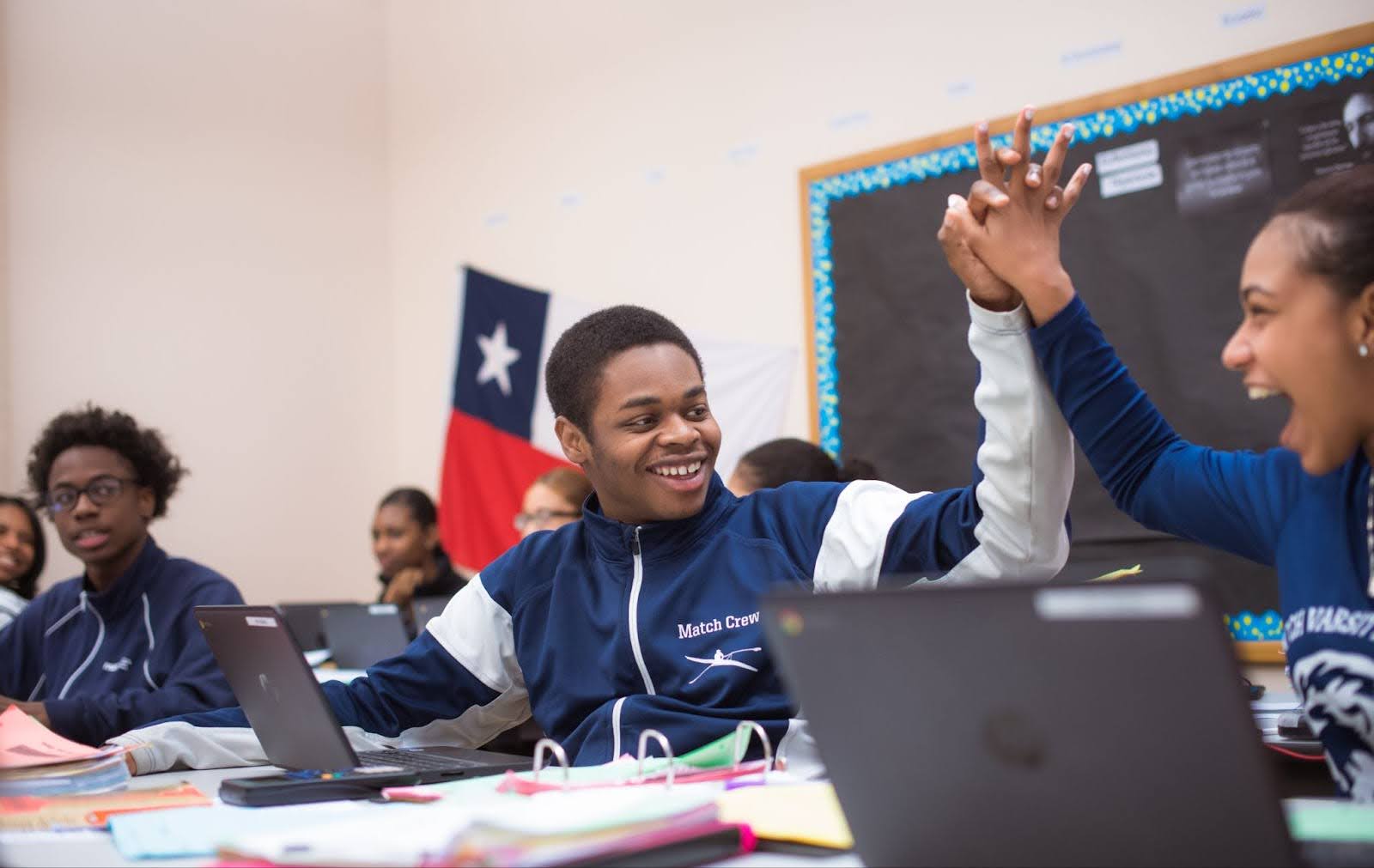
Balancing Tech and Talk in Your Classroom with Fishtank Student
November 05, 2025
Classrooms are abuzz with devices these days as Chromebooks, iPads, and laptops have become part of students’ daily toolkit. With various forms of technology and different platforms at their fingertips, it’s natural to worry that interaction and discourse might take a back seat.
But more screens don’t have to mean less conversation. At the heart of the Fishtank curriculum is a commitment to prioritizing student voices and ideas—a guiding principle that doesn’t change with the influx of technology. In fact, when used intentionally, technology can strengthen this focus by sparking richer discussions, creating unique opportunities for critical thinking, and inspiring collaboration between students. Below, you can explore a few ways the new Fishtank Student platform, available for students in grades 6-12, can empower teachers to seamlessly blend digital tools with face-to-face dialogue.
Idea #1: Make Target Tasks Talkable
The Target Tasks embedded in each lesson allow students to synthesize their understandings from the day’s lesson. While students will be working through a large portion of the Target Tasks independently, there are still ample opportunities to build in before, during, and after moments for dialogue.
Before engaging with the Target Task: The goal is for students to do the heavy thinking here—trying out ideas, getting feedback from their peers, and refining their ideas based on conversations. Fishtank Student’s scratchpad functionality can support this stage by giving students a space to plan their response informally.

Students can draft bullet points, jot ideas, or sketch out their reasoning digitally, then share those initial plans with a peer before returning to write their full response. This ensures every student enters the task with ideas they’ve already voiced and refined through discourse.
During the Target Task: Pause halfway through so pairs can compare thinking, troubleshoot confusion, or push each other’s ideas further. With Fishtank Student, students can toggle between their in-progress responses and the text as they discuss, ensuring they bring textual evidence into the conversation.

Encouraging students to share not just their draft answers, but also the evidence they’ve highlighted or cited in-platform, helps ground the mid-task pause in academic talk that is both collaborative and text-based.
After engaging with the Target Task: After completing their independent responses, students can engage in academic discourse through partner, small group, or whole-class discussions. With Fishtank Student, editing and refinement become seamless, as students can easily return to their typed responses and update them based on the feedback they received. This makes the connection between discourse and writing visible: conversation leads to revision, and revision strengthens ideas.

More information on leveraging Target Tasks to promote academic discourse can be found in our Teacher Tool here.
Idea #2: Share the Screen, Not Just the Answer
Within Fishtank ELA, students have opportunities for both formal and informal discourse as they discuss the day’s lesson and the Target Task. Technology makes student thinking more visible—use that visibility as a springboard for conversation.
Project anonymized student work for whole-class analysis.
Instead of reviewing student answers privately, display a few anonymized responses so the class can analyze them together. While Fishtank Student doesn’t automatically anonymize responses, teachers can easily take screenshots or crop out names before sharing. Taking this small extra step can help create a safe space for students to focus on the work itself, instead of who wrote it. Guide students to notice strong qualities of the work, question gaps, and build on each other’s ideas using evidence. This shifts digital work from a solitary task to an exercise in collaborative thinking.

Host a digital “gallery walk”.
Have teachers project their screen and scroll through a set of responses so that students can type or write down their comments on each. Encourage them to use accountable talk stems such as “I agree with…”, “Have you considered…”, and “This reminds me of…” so their feedback can dig a little deeper. This activity builds in space for collaboration while reinforcing discourse norms in a digital space.
Teacher Tip: Before starting, check in with students about their comfort level in sharing their final responses with peers. Some may prefer to share drafts or excerpts instead. Modeling this conversation helps normalize choice and reinforces a classroom culture of respect and trust.
Turn digital responses into oral rehearsals.
Ask students to type a draft of and recite a short explanation of their thinking to a partner or small group. Peers can respond with questions, suggestions, or connections, creating a feedback loop between written and spoken discourse. You can even find some ideas for innovative Peer Feedback Protocols in our Teacher Tool here. This approach is especially helpful for multilingual learners, who may benefit from practicing oral language before revising their writing.

More information around promoting academic discourse in a Fishtank classroom can be found in our Teacher Tool here.
Idea #3: Equalize Voices with Evidence
One of the challenges of classroom discussion is ensuring that every student has the opportunity to contribute meaningfully, not just the most talkative ones. Fishtank Student helps level the playing field by making each student’s thinking visible before the conversation begins. Whether it’s a scratchpad note, a highlighted passage, or a drafted response from the lesson materials available in Fishtank Student, students come into the discussion with ideas already on the page.

This approach benefits both students and teachers. Quieter students or those who need more processing time can still participate fully, because they already have a concrete idea to share. Teachers can quickly scan responses to identify common patterns, interesting perspectives, or misconceptions, then use those insights to guide whole-class or small-group discussions. This ensures that the conversation isn’t dominated by the few who speak first or fastest, and that every student’s thinking shapes the direction of the talk.
As an added bonus, since students can reference evidence directly from the text—or, when available, from supporting materials accessible in Fishtank Student—discussions become more grounded and precise.
This way, students are not just expressing opinions, but backing up claims, asking targeted questions, and responding to peers with substance. Over time, this builds stronger habits of critical thinking, reasoning, and respectful dialogue.
In conclusion, devices don’t need to silence your students. As you explore integrating Fishtank Student into your daily classroom routine, experiment with weaving in structured talk, collaborative moments, and opportunities for students to respond to one another. By using the platform in this way, teachers can foster discussions that are inclusive, rigorous, and anchored in evidence, turning technology into a tool that amplifies all student voices, rather than replacing them.


